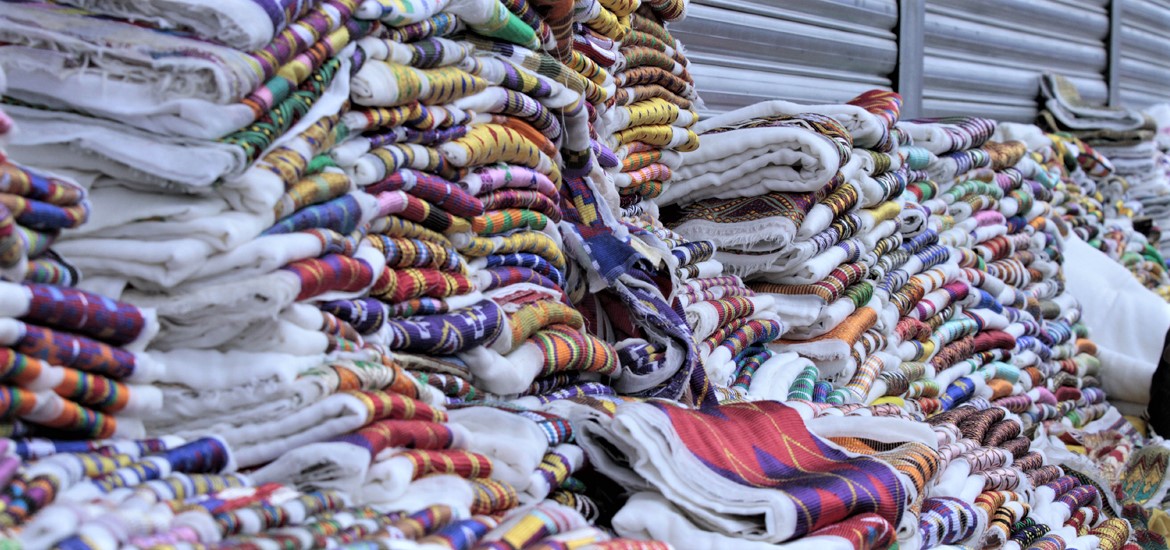
Ethiopians have varieties of occasional costume. The traditional clothes are colorful and magnificent. Blue, white, red, yellow, black, red and combination of these colors provide beauty to the clothing of the nation.
The traditional dressings are common during holidays and occasional festivities. Some clothes are unique to specific celebration. For instance, the clothing meant for Timket, Ethiopian Epiphany, would be slightly different from that would be worn to other holidays provided that shawls, netela have been shared among Ethiopian women.
Ethiopia is a home to multi-ethnic groups each having unique culture and tradition with commonalities among them. Likewise, the costume varies from tribe to tribe with likeness in some kind. Thus, one can comprehend not only biodiversity, but also the cultural diversity which is the underlying cause of the beauty of the nation.
Some central and northern areas, women’s traditional clothes are often made from cloth called shemma. It is basically cotton cloth, about 90 cm wide, woven in long strips which are then sewn together. Sometimes shiny threads are woven into the fabric for an elegant effect. It takes about two to three weeks to make enough cloth for one dress. The bottom of the garment or shirt may be ornamented with patterns.
Men wear shorts and a knee-length shirt with a white collar, and perhaps a sweater. They also frequently wear knee-high socks, while women might not wear socks at all. Men as well as women wear shawls, the netela specifically on the occasion of religious celebration and funerals. The shawls are worn in a different style for different occasions. When going to church, women cover their hair with them and pull the upper ends of the shawl about their shoulders reproducing a cross, meskelya, with the shiny threads appearing at the edge.
During funerals, the shawl is worn so the shiny threads appear at the bottom, madegdeg. Women’s dresses are called habesha kemis, and are often made from the shemma cloth. The dresses are usually white with some color above the lower hem. Bracelets and necklaces of silver or gold are worn on arms and feet to complete the look. A variety of designer dinner dresses combining traditional fabric with modern style are now worn by some ladies in the cities
Samuel Argaw, Production and Plan Manager of traditional garment, told The Ethiopian Herald that the consumption of local products has been increasing over time with the improvement of the quality of their products. Some of the products are of fine quality. They are of export quality and are being dispatched to foreign countries, he said.
Samuel added that the price of the items is calculated based on the total cost incurred during production. About 70 to 80 percent of the raw materials are imported from abroad. This is one of the major factors that contribute to price increment.
In an exclusive interview with The Ethiopian Herald, Sileshi Amba, a consumer of traditional cloth, said that buying domestic products can have double significance. One is, it can cultivate the habit of using domestic products and boost the confidence of using them. Again, it can contribute to the economy of the country.
Sileshi is proud of wearing domestic products including cultural clothes. Wearing cultural cloth would help display the beauty of the country to the rest of the world. The country has multitudes of natural and manmade wonders. And the cultural cloth is one of the beauties, as to him.
The consumer figured out the first problem with wearing cultural cloth to be the comfort of the cloth. The clothes are not suitable for casual dressing. Most of the clothes are not to be dressed at work place. Thus, he usually wears them for special occasions. The clothes are colorful and are easily vulnerable to dirt besides their high cost.
Ayda Alemayehu, Salesperson at Tobel Cultural Cloth, said that the cultural clothes sold at her shop are worn occasionally. This is because the products are not comfortable to be worn daily. Buyers come to her shop during holidays and special events.
The demand for the cloth is also seasonal. People visit their shop only if they have to attend special occasions such as public and religious holidays, as well as weddings. Foreigners and Ethiopians living abroad may need the clothes as well. Otherwise, buyers rarely come to the shop, she added.
Ayda further explained that the production process of the clothes is difficult, time consuming and labor intensive. Due to this reason, the price of the clothes is high compared to casual clothes.
Amanuel Luba, salesperson of Sena Cultural Garment, told The Ethiopian Herald that selling domestic products is interesting. He earned much confidence in wearing and selling domestic products since he started the business. It gives a sense of national pride, as to him.
For Amanuel, some cultural clothes are colorful and loose. They are not fit and slim, thus, are not favorable for casual clothing. Rather, they are preferred during special holidays and cultural festivities. As a result, the demand for the clothes is situational.
The traditional clothes need to be designed in such a way that they could be comfortable and fit to every event. They should be made with fashionable design. Fashion is replacing the traditional clothes. Thus, making traditional clothes in a fashionable way could help increase the demand for the clothes.
The sellers agreed upon the fact that production and consumption of domestic goods and services would help enhance domestic business. It would help create job opportunity, maximize tax income, and increase Gross Domestic Product, they pointed out.
Some people of the country wear clothes of their own culture casually. They put on a piece of garment woven by local weavers. The Omo people are typical example of such people. They are known for their unique costume. Almost all of them put on their inland clothes regularly.
Ethiopians are also known for the cultural jewelries which are worn around the neck, the ankle, wrist, and head. Beads and other jewelries made of shiny metals are common among the people.
The Ethiopian Herald August 4, 2020
BY GETAHUN LEGESSE




